Main Menu

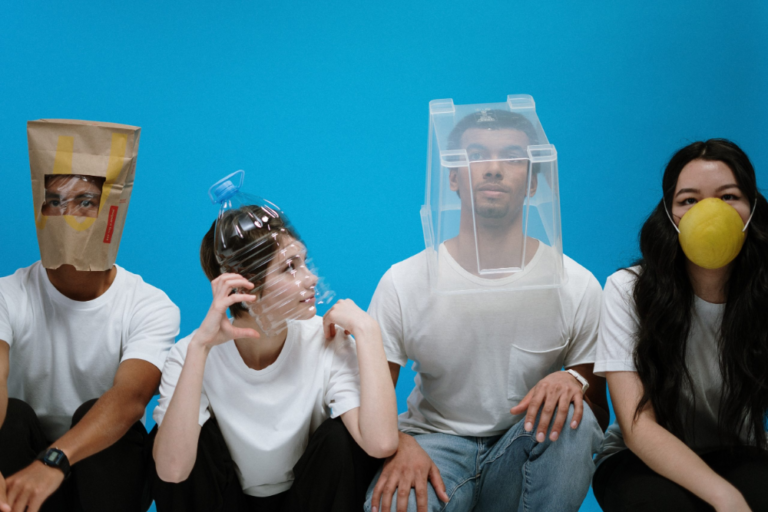
A pandemic is the kind of time when you want information to be true and credible. And yet, we all have someone in our lives who moonlights as an epidemiologist on occasion. The unlucky among us might know 5G conspiracy theorists and mask-shunners. Or have Trump as President.
If you didn’t instantly exit this page, well done. This means you have excellent critical thinking skills. We’ve had to collectively employ these, as well as creative thinking skills, a lot this year. From deciding how cautious to be, to finding workaround after workaround for the changing situation.
You developed those critical and creative thinking skills when you were kids, of course. We often talk about real world applications as the best way to teach kids these soft skills. Textbook problems add an abstract element that is difficult for students to attach to.
Right now, we have the mother of all real world applications. All of your students are affected by COVID-19 and are dealing with it in their own way. Just like us, they will also have found or heard different information — some true, some maybe not so true.
How many of your students are critically examining the information they hear or see and asking the right questions about it?
Suddenly, the creative and critical thinking skills we need to teach kids feels very real and very important. We need to set our students up to make good decisions.
In setting up a COVID-19-themed lesson to teach kids problem-solving, we turned to no other than WeRobotics.
WeRobotics and their Flying Labs network use drones to help solve local problems — by investing in local expertise to create local solutions.
Basically, in a crisis, instead of going to places that need assistance, trying to fix their problems and then leaving, they invest in the fixers who are part of the local community. Like you and like us, they are educators and enablers. We’re in good company.
As a result of how much drones are being used in the pandemic, WeRobotics have been updating information from global experts about the usage considerations. They have written an excellent blog from an industry perspective here.
When you layer in new ways that we are using technology, like drones, there’s a real opportunity to employ those creative and critical thinking skills to look at these usages from lots of interesting angles:
This is about asking kids to weigh up the pros and cons, consider improvements that should be made, consider the parameters within which technology should be used, and answer ethical questions as well as practical ones.
Essentially, get kids involved in using critical and creative thinking to make good decisions while also understanding what drones are capable of.
Below, is the information about drone usage during the pandemic. It checks out as credible because it’s from global experts and it has been reviewed and included by a second party, WeRobotics.
First, we need to tell students what the usage is, making sure to remove as much bias as possible about whether or not we think the usage is a good one — we want to help students go through the process of reaching a conclusion themselves.
Next, we’re asking students the question: What are the considerations or factors? This is the pros and cons list. It outlines context, knock-on effects, and looks at evidence.
The final question is: Should we use it in a pandemic? This is a question that often needs follow-up questions and it also doesn’t need a yes or no answer. Students who can reach a balanced analysis, taking the good parts of a usage and looking at alleviating or improving some of the problematic parts are showing creative and critical future thinking skills.
Here, you’ll find seven drone usages in no particular order of importance. If we’d done that, we would absolutely have put mapping, our favourite, first!
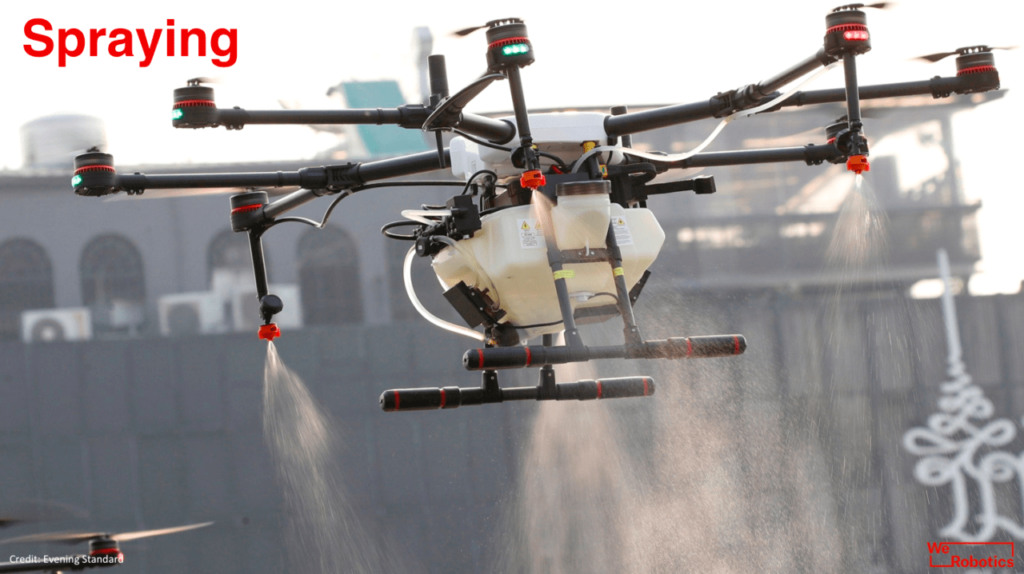
What is it?
A drone flies with a pump, tank, and nozzles to spray a liquid in a certain area. Normally, this is used for agricultural purposes — spraying a crop with a fungicide to help it grow, for instance. During the pandemic this was used to spray disinfectant to sanitize areas.
What are the considerations/factors?
Should we use it in a pandemic?
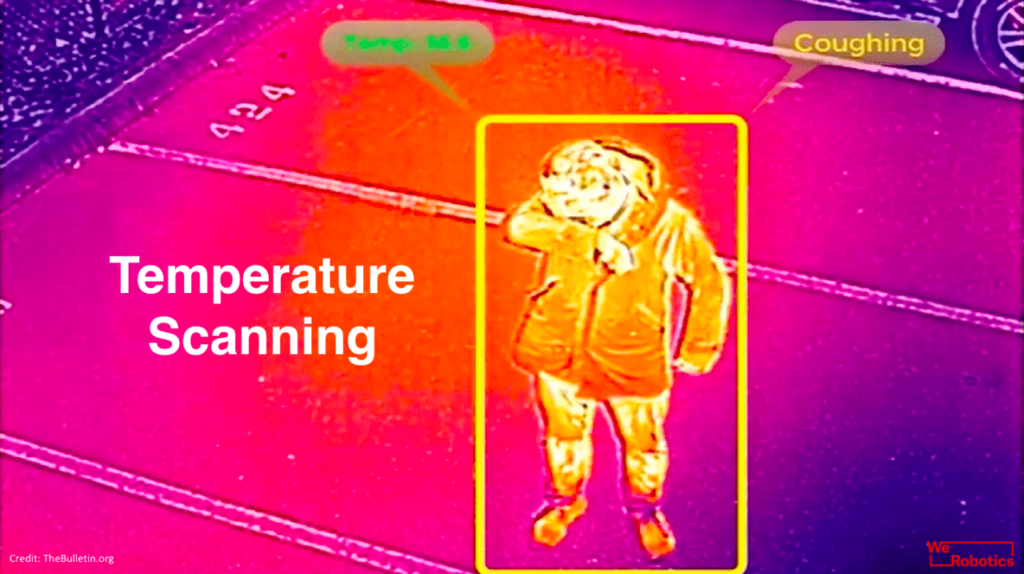
What is it?
Drones fly in the air, a few metres away from a person, and use their heat detection technology to see if that person has a higher temperature than normal.
What are the considerations/factors?
Should we use it in a pandemic?
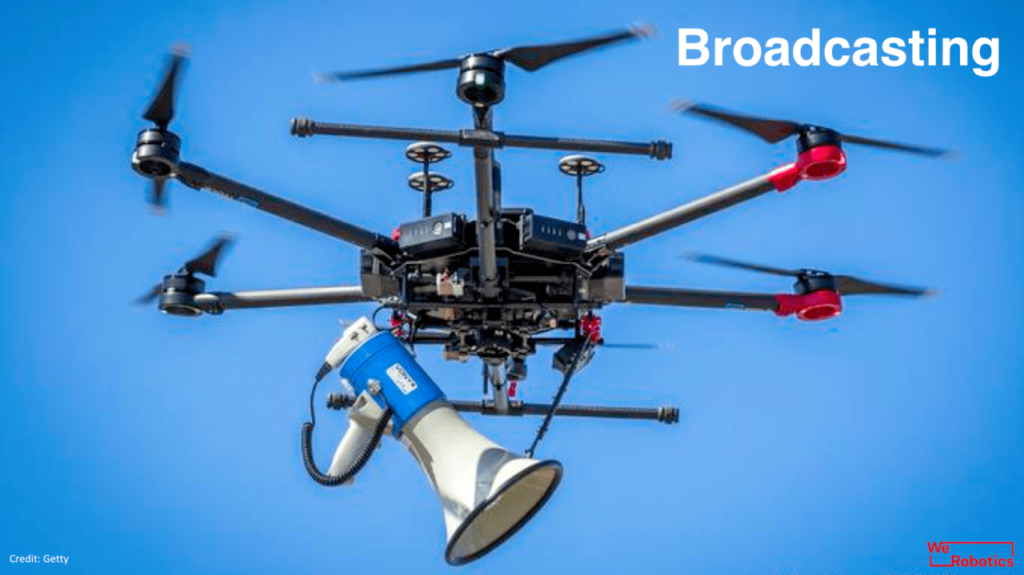
What is it?
Loudspeakers are attached to drones and public safety announcements are made from the sky to encourage physical distancing and staying home.
What are the considerations/factors?
Should we use it in a pandemic?
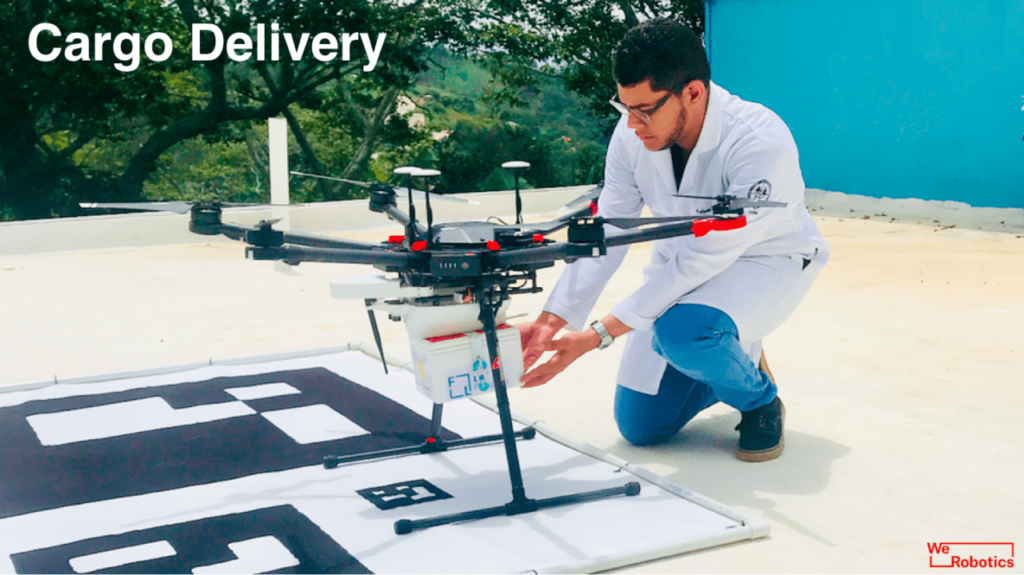
What is it?
Using cargo drones to deliver essential medicines and to collect patient samples for COVID-19 testing quickly and while maintaining a safe social distance.
What are the considerations/factors?
Should we use it in a pandemic?
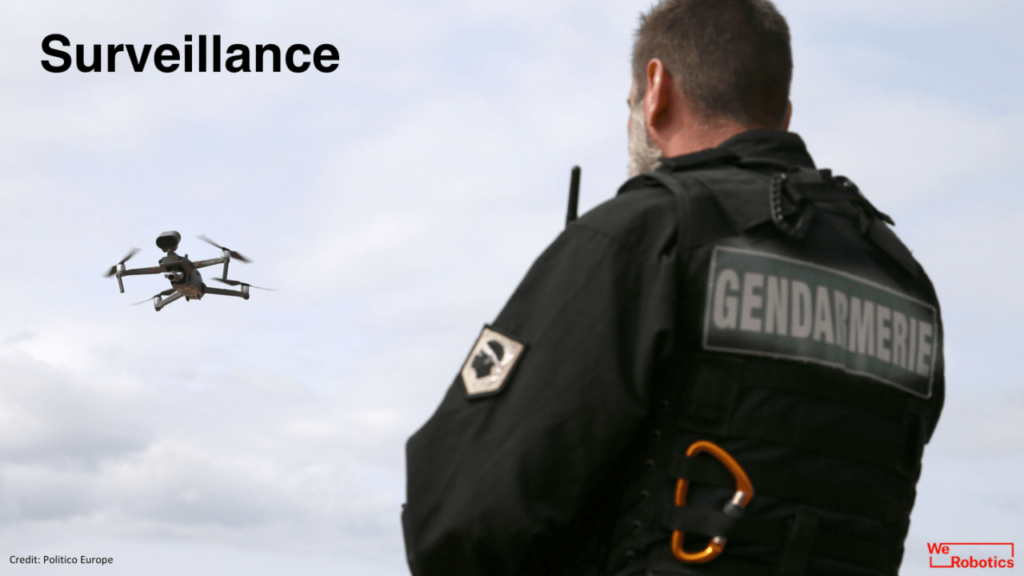
What is it?
During the pandemic, drones have been used to monitor the movement of people, for instance, breaking isolation rules.
What are the considerations/factors?
Should we use it in a pandemic?
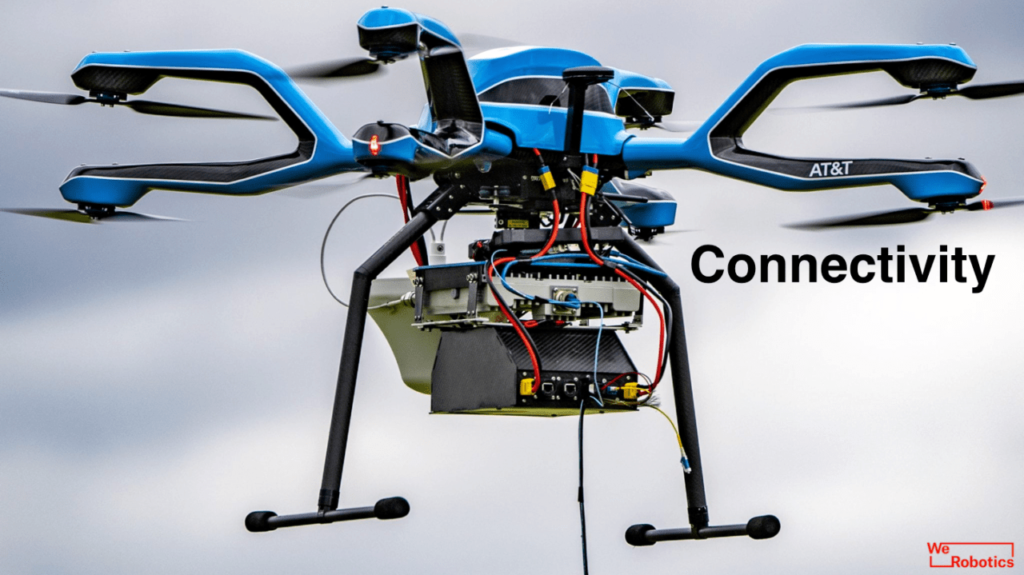
What is it?
Drones are being used as “flying cell phone towers” creating a signal for cellphone and internet reception. They are tethered to the ground so they supply this signal in their surrounding radius.
What are the considerations/factors?
Should we use it in a pandemic?
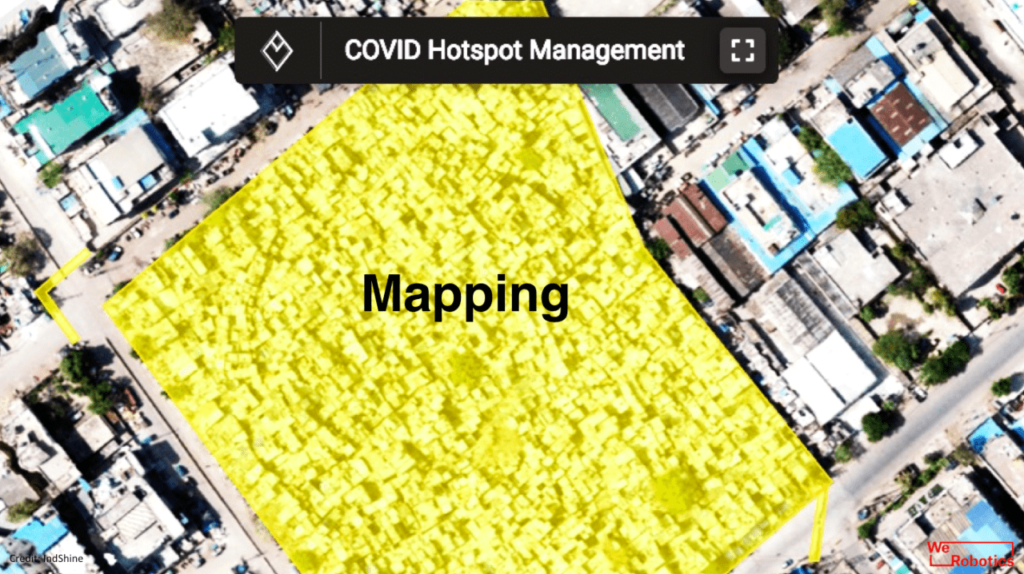
What is it?
Drone mapping gathers aerial data about a particular area to collate and analyse. Mapping from the air means that all kinds of data can be gathered — from photos, to temperature, to 3D topography. In the coronavirus pandemic, high resolution maps were used in combination with population data to show areas.
This helps authorities figure out which areas have lots of people in them and what other considerations are in the area, like delivery routes, to decide things like what areas to shut down and where to put testing centres.
What are the considerations/factors?
Should we use it in a pandemic?
This is a great lesson to lead into more mapping-based lessons in your classroom. Students will have this real-world application to attach it to and understand what mapping is used for. You could set up a ‘disaster relief’ team to capture aerial photos of a town.
Or, if you want to mix things up with some slightly lighter content, you could show students how to use aerial mapping to figure out how much shade your school has to know how many trees to plant to keep everyone cool.
There are so many imaginative ways in which to use drones, both in the classroom and the real world. By teaching our students how to critically, creatively, and ethically use technology, we are setting them up to create a much better world.
She Maps is Australia’s leading expert in drone and geospatial education.
She Maps assist schools with the purchasing of drones, school-industry created drone and geospatial teaching resources and highly supportive teacher professional development.
Ready to buy drones for your school? We are an authorised DJI reseller in Australia

Subscribe by email and never miss a blog post or announcement.

She Maps aims to bring much needed diversity and support to STEM. We do this by providing drone and geospatial programs to teachers and schools across the globe.
At She Maps we acknowledge the Traditional Custodians of Country throughout Australia and their connections to land, sea, and community. We pay our respect to their Elders past and present and extend that respect to all Aboriginal and Torres Strait Islander peoples today.
Aboriginal and Torres Strait Islander peoples are advised that this site may contain names, voices, or images of people who have passed away.
Learn the 6 Steps to Launching a Successful Drone and Geospatial Program at your School
Take our resources for a spin and join the thousands of teachers who love our ready-to-teach classroom materials. Try one of our complete units of work for free.

